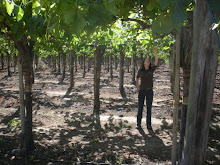
Here at the Outdoor Gourmet, we are sweet on local honey; so much so that I am writing tasting notes for our pals at Sweet Bee Honey Co. in the classic wine tasting method. Check 'em out!
Welcome to your weekend. -KB
Honey is nature’s own sweetener, packed with healthy enzymes, vitamins, and antioxidants and comes in many different varieties, ranging in color, flavor and body, depending on the floral source and time of year.
Found abundantly in the northwest, Russian or Spotted Knapweed (Centaurea Maculosa) blooms purple during the height of summer. Our colonies grow vibrant while working this plentiful plant, which produces dark gold honey.
The aromas of Knapweed Honey can be likened to a wheat field on a hot day- sweet and grassy. Followed by soft caramel notes, this medium-bodied honey is easily paired with just about anything.
Clusters of white flowers frost the Buckwheat (F. esculentum Moench) fields of Washington in Spring. This crop is grown almost solely for the production of Japanese Soba Noodles and produces a beautiful, dark auburn honey.
Earthy aromas, dark and rich, make Buckwheat the fullest bodied and most complex honey we produce. Molasses, tobacco, and cinnamon notes warm the pallet and make for a robust, smoky finish.
Lim
Blackberry blossom honey is the purest and most rare honey produced in the great Northwest. Nectar collected from the thorny brambles of the Himalayan Blackberry (rubus armeniacus) creates this monofloral honey that drips from the comb translucent and nearly colorless. Once it’s packed, a faintly opaque and blonde hue makes it obvious why this is our reserve label product.
Clean, crisp lemongrass aroma, followed by soft floral and melon notes is what sets this honey apart as one of our most premium products. A hint of sumac adds a rich, full flavor on the finish, giving depth to this light-bodied honey.
Late- Harvest Star Thistle Honey
Harvest Star Thistle Honey
Harvested from scrubby, sun-colored flower of the prickly yellow star thistle (centaurea solstitialis), this is our lightest-bodied honey. With a tropical fruit and fresh-pressed comb aroma, this is a highly sought-after flavor by avid honey connoisseurs.
Rolling hills of bluish-purple alfalfa bloom cover the landscape of Eastern Oregon in early summer. The nectar from Alfalfa (medicago sativa) creates this rich, monofloral honey, clear and golden.
Warm, earthy aromas of cloves and spiced peaches fetch imagery of the staple crop from which it’s harvested. Smooth on the pallet, this medium-bodied honey is abounding with summertime flavors.
To find this high-quality, local product, check out the Walla Walla Farmers Market or visit www.sweetbeehoneyco.com.











